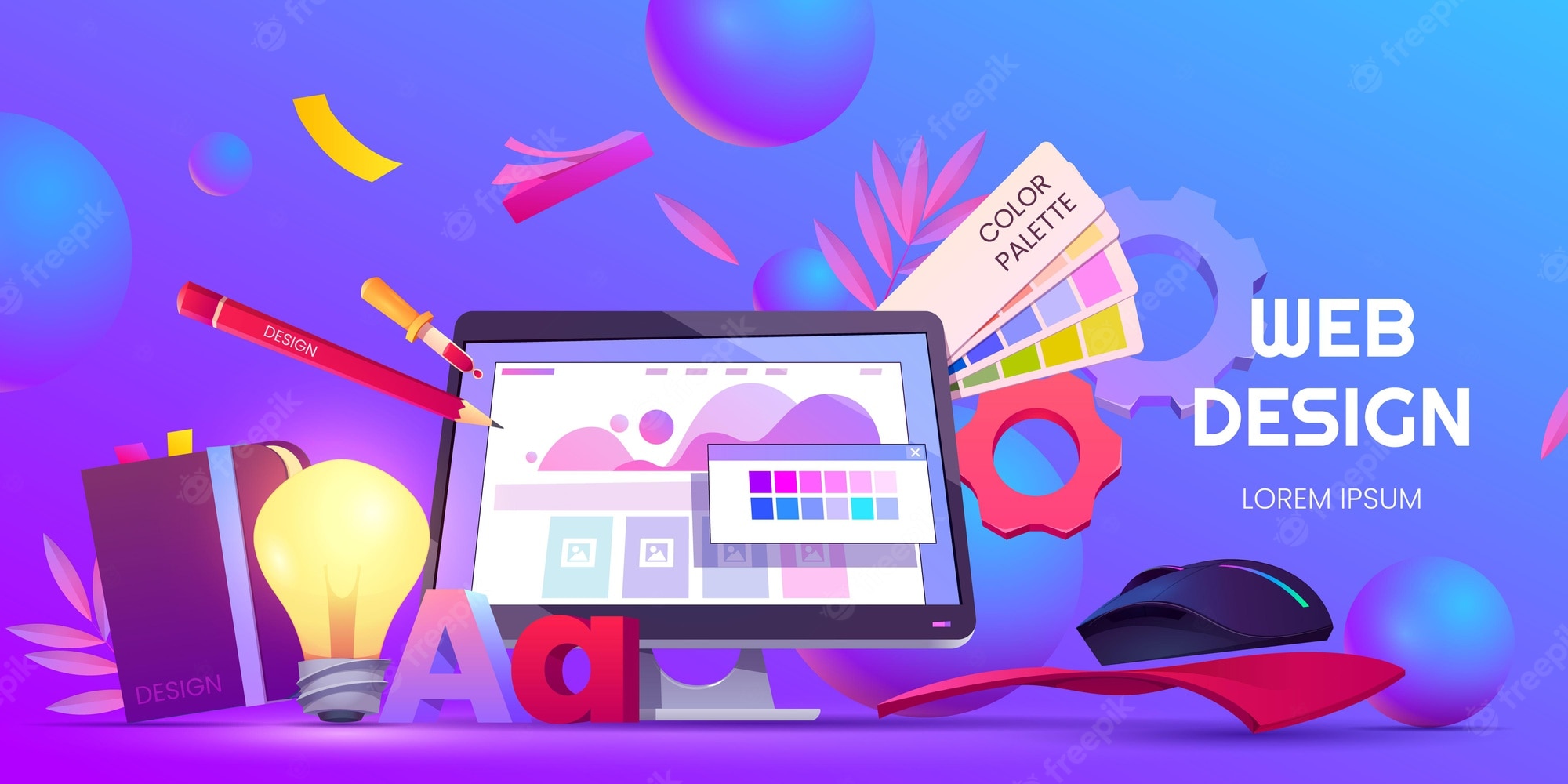Why an agency for web design is essential for your business growth
The Relevance of User Experience in Effective Web Design Methods
User experience (UX) offers as a cornerstone in effective web design approaches. It shapes how users interact with a website, affecting their contentment and likelihood of returning. A well-designed UX can boost engagement through user-friendly navigating and receptive layouts. Overlooking these facets may lead to aggravation and increased bounce rates. Comprehending the details of UX is important for designers aiming to produce engaging electronic experiences that resonate with diverse audiences. What aspects absolutely drive effective user engagement?
Comprehending User Experience and Its Effect on Layout
Although user experience (UX) is often viewed as a mere element of web design, it fundamentally shapes just how users interact with a website. UX incorporates all facets of the user's interaction, consisting of usability, availability, and overall fulfillment. A positive UX promotes engagement, encouraging users to explore the site and return in the future. On the other hand, an unfavorable experience can bring about aggravation, causing high bounce prices and lost possibilities for conversion.
Style aspects like layout, navigating, and web content company play essential functions fit this experience. Effective UX design expects user demands and preferences, ensuring that details is conveniently available and aesthetically enticing. In addition, comprehending user actions via analytics can offer important understandings, informing layout decisions that improve functionality. Ultimately, a complete understanding of UX enables designers to create sites that not just attract individuals however likewise promote purposeful communications that line up with organization objectives and user assumptions.
Key Principles of Efficient User Experience
Efficient user experience pivots on numerous vital principles that enhance website performance and involvement. User-friendly navigation style, responsive format essentials, and the value of visual pecking order are essential components that add to a seamless interaction in between individuals and internet material. Recognizing these concepts permits developers to create even more straightforward and available digital environments.
Intuitive Navigation Layout
When individuals come across a web site, instinctive navigation style acts as an essential gateway to their overall experience. Efficient navigating permits customers to effortlessly locate the information they seek, improving their interaction with the website. Key concepts consist of clear labeling, logical company, and consistent positioning of navigation components. Tags ought to be simple, allowing users to anticipate the web content they will certainly discover. A well-structured hierarchy assists customers understand the partnership in between different sections, directing them via the website seamlessly. Furthermore, receptive food selections and conveniently obtainable links add to a liquid experience across tools. By prioritizing intuitive navigating, developers can substantially minimize user stress and boost involvement, inevitably promoting a favorable perception of the internet site and its web content.
Responsive Format Basics
A well-structured navigating system naturally results in the demand for a responsive format, which is vital in today's varied digital landscape. A responsive design warranties that websites feature seamlessly across various devices, including desktops, tablet computers, and smart devices. This adaptability enhances user experience by enabling web content to be visually systematic and quickly accessible, despite display size. Key principles of receptive layout consist of fluid grids, adaptable pictures, and media queries, which help with perfect viewing. Additionally, focusing on touch-friendly elements enhances interaction on mobile tools. By carrying out a responsive design, developers can fit customers' demands, reduce bounce prices, and increase engagement. Ultimately, a well-executed receptive design cultivates a favorable user experience, encouraging visitors to check out the internet site even more.
Visual Hierarchy Importance
Visual pecking order plays a necessary role in assisting users through a web site, making sure that critical details catches their attention. By tactically using dimension, color, contrast, and spacing, developers can produce a clear pathway for customers to follow. Bigger aspects typically draw the eye, indicating their significance, while contrasting colors can highlight phone calls to action. Additionally, constant placement and grouping of associated content improve comprehension, making navigation instinctive. Efficient usage of aesthetic hierarchy not just improves functionality but additionally sustains the total aesthetic of the site, promoting a positive user experience. When customers can easily determine one of the most crucial information, they are extra most likely to involve with the content, causing enhanced contentment and interaction with the website.
The Role of Usability in Web Design
Functionality plays a vital duty in web design, specifically with navigating simpleness and adherence to accessibility standards. Efficient navigating improves user contentment by allowing site visitors to find information rapidly and intuitively. Meeting accessibility criteria guarantees that all customers, regardless of their abilities, can effectively communicate with the web site.
Navigation Simpleness
Simplicity in navigation stands as a foundation of reliable web design, greatly influencing user experience. A streamlined navigating system permits users to discover info swiftly and intuitively, reducing irritation and enhancing fulfillment. Clear labeling and sensible framework are necessary elements, directing individuals easily with the internet site. Redundant web links or overly complex food selections can disorient individuals, resulting in increased bounce rates. Furthermore, mobile responsiveness needs to be taken into consideration, guaranteeing navigation remains simple throughout devices. Prioritizing crucial pages and reducing mess better sustains user interaction. Effective navigation not only promotes a favorable experience but additionally motivates users to explore the site better, inevitably causing higher conversion prices. In this respect, navigation simplicity works as an essential factor in the total effectiveness of web design approaches.
Availability Standards
User interaction is greatly enhanced when internet sites follow ease of access criteria, making sure that all individuals, no matter of their abilities, can navigate and engage successfully. Conformity with these criteria not just expands the target market but also boosts general user fulfillment. Obtainable design incorporates functions such as text alternatives for images, key-board navigation, and enough color comparison, which help with usage by individuals with disabilities. On top of that, applying these criteria can positively influence search engine optimization (SEO) by improving site framework and quality. As web design progresses, prioritizing ease of access becomes crucial in cultivating an inclusive digital environment. By embracing these requirements, designers add to a much more fair internet, inevitably driving user commitment and involvement.
Significance of Responsive Design for User Engagement
As consumers progressively gain access to sites with a range of devices, the relevance of responsive design becomes critical for involving individuals effectively. Receptive layout warranties that a site adjusts seamlessly to various screen sizes, giving a perfect viewing experience regardless of the tool utilized. This adaptability enhances user engagement by helping with much easier navigation and interaction with material.
When customers run into a site that is receptive, they are more probable to stay longer, explore additionally, and return in the future. A well-designed responsive format reduces the stress frequently connected with scrolling and zooming on smaller sized screens, therefore decreasing bounce prices. In addition, responsive style can positively affect online search engine positions, as internet search engine prioritize mobile-friendly sites. In today's electronic landscape, where mobile use continues to climb, executing responsive layout is not just advantageous, however essential for preserving user interaction and guaranteeing a positive experience throughout all gadgets.
Enhancing Load Times for Better User Complete Satisfaction

To enhance load times, web developers should prioritize maximizing images, leveraging internet browser caching, and decreasing HTTP requests. In addition, utilizing Content Shipment Networks (CDNs) can quicken content shipment by distributing it across numerous geographic places. Streamlining code, such as compressing CSS and JavaScript documents, additionally adds to quicker loading speeds.
Inevitably, a commitment to enhancing lots times not just improves user satisfaction yet likewise strengthens brand commitment and enhances the possibility of repeat sees. A swift, seamless experience is essential for retaining customers and fostering positive interactions.
The Impact of Visual Hierarchy on User Interaction
Visual pecking order offers as an essential element in guiding user interaction on a website. By arranging content in such a way that prioritizes details visually, developers can influence exactly how customers involve and browse with a this website website. This power structure is established through various style techniques, including dimension, color, comparison, and spacing. For example, larger fonts or strong colors draw interest this article to vital aspects, such as phone call to action or headings, while restrained colors and smaller sized font styles can suggest subservient details.
Effective aesthetic pecking order aids customers quickly determine what is most essential, decreasing cognitive load and improving usability. It permits instinctive navigation, making it much easier for customers to locate what they require without aggravation. As customers engage with a website, a well-structured aesthetic hierarchy cultivates a much more enjoyable experience, inevitably resulting in greater engagement and conversion prices. Designers should focus on these principles to produce a efficient and user-centered internet setting.
Gauging User Experience: Devices and Techniques

Frequently Asked Concerns
Just How Can I Enhance My Website's User Experience on a Budget?
To boost a website's user experience on a budget plan, one can optimize web page lots rate, streamline navigating, apply receptive design, boost material quality, and collect user comments for constant improvements, ensuring an enjoyable site visitor experience.
What Prevail User Experience Errors to Prevent in Web Design?
Typical user experience errors in web design consist of messy formats, bad navigating, slow loading times, absence of mobile responsiveness, neglecting accessibility, inconsistent branding, and stopping working to prioritize user feedback - Web Design Agency. Each can considerably impede overall site performance
Exactly how Frequently Should I Update My Site for Better User Experience?
Sites need to be upgraded frequently, preferably every couple of months, to keep ideal user experience. Frequent updates aid address click this usability issues, rejuvenate material, and adjust to changing user needs, making certain the website stays relevant and engaging.

Can User Experience Influence SEO Rankings on My Website?
User experience can considerably affect SEO rankings, as online search engine focus on websites that provide smooth navigation, fast loading times, and interesting material. A favorable user experience can lead to lower bounce prices and greater search visibility.
What Function Does Ease Of Access Play in User Experience Layout?
Ease of access plays an important function in user experience style by guaranteeing that all people, despite abilities, can browse and communicate with a site properly. This inclusivity improves total contentment and involvement among diverse customers.
User experience (UX) is usually perceived as a plain aspect of internet style, it fundamentally shapes just how users connect with an internet site. User engagement is greatly enhanced when sites adhere to accessibility criteria, ensuring that all users, no matter of their abilities, can browse and engage efficiently. Gauging user experience (UX) is vital for comprehending just how properly a website satisfies the demands of its individuals. Furthermore, use screening, where real customers navigate the website while observers note problems, uses direct comments on user experience. Common user experience mistakes in web style include cluttered layouts, bad navigating, slow-moving filling times, lack of mobile responsiveness, ignoring availability, irregular branding, and stopping working to focus on user feedback.